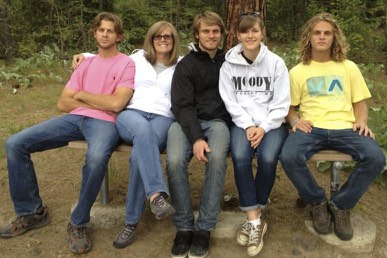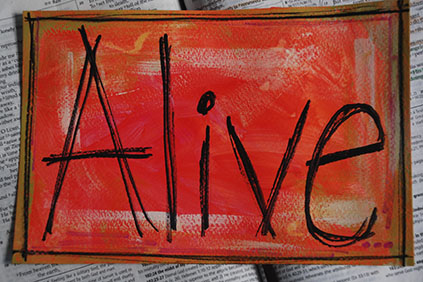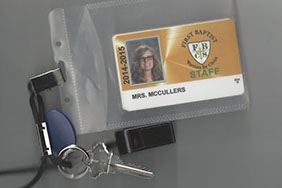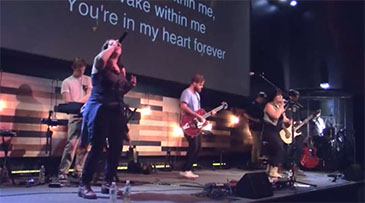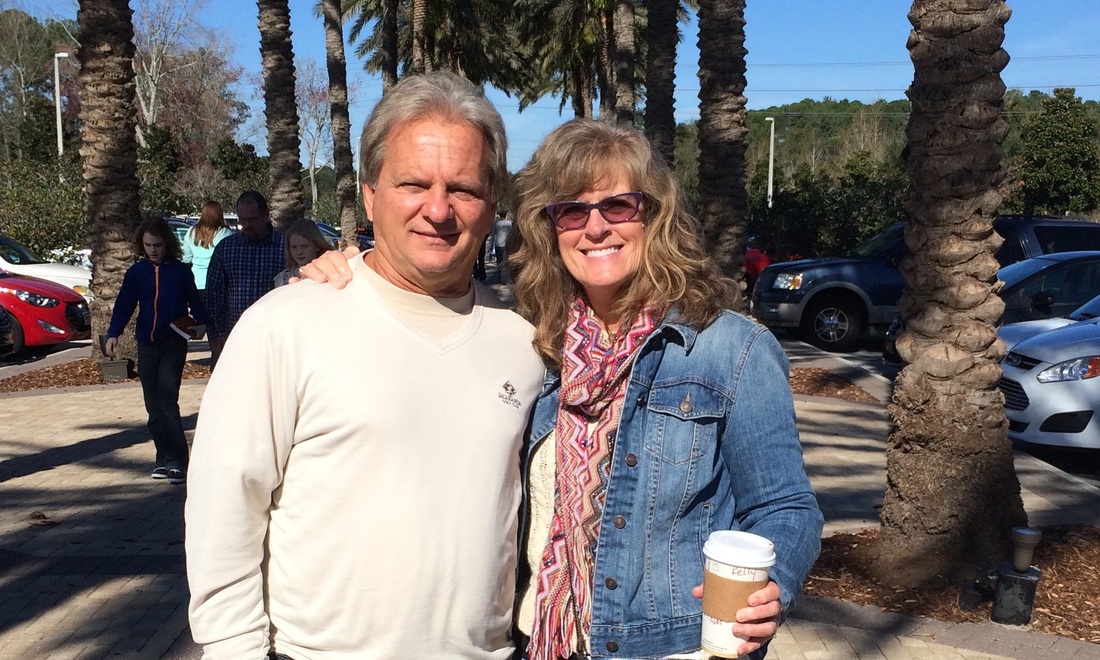A Self Portrait in Photos
FamilyThis is a photograph of my family minus my husband; he is taking the picture on his iPhone. It is one of my favorite photographs and is my profile picture on FaceBook. On the far left is my oldest son Justin, next is me, Josh, then Amanda, and JordyTom. I am blessed to have an amazing family. This iPhone 5s photo was texted to me and I air dropped it to my iMac. It is a JPEG image, 39 KB, dimensions 387 x 258, 72 dpi. |
Alive
This artwork represents that I am a cancer survivor. My oncologist always calls me a miracle and reminds me that everyday is a gift. I created this for the first Indie Project I did at UF, which was an art workshop for children struggling with cancer and their families. This photo is a digital still taken on a Nikon D80. It is a JPEG image, 379 KB, dimensions 1761 x 1174, Focal length 62, F number 5.3, exposure time 1/250, 72 dpi. |
UKULELE
I love to play the ukulele. One year I asked everyone in my family to get me one for Christmas. They all thought I was joking but I was serious. I finally purchased my first ukulele about ten years ago. My favorite thing about the ukulele is you cannot help but smile when you play one. This image is from a Google search. It is a JPEG image, 6 KB, dimensions 322 x 156, 72 dpi.
|
School IDI love teaching art. I have worked at FBCS since 1999. Our faculty and staff are like family. I cannot imagine working anywhere else. The administration is supportive and interested in promoting and building our arts department. I am blessed to have the job I have. This image is a scan from an HP Officejet 6600. It is a JPEG image, 52 KB, Dimensions 784 x 522, 72 dpi.
|
TC3My faith and my church family are a big part of my life. I worked with church youth and college students for about twenty years. This is a photo of our youth band playing for our Sunday morning service. I created a video still shot by pausing the video and taking a screen “grab” shot. It is a portable network graphics image, 412 KB, dimensions 730 x 406, 72 dpi.
|
MY HUSBANDMy son’s fiancé took this picture while my husband and I were visiting Jacksonville. Ray (my husband) has put up with my creative craziness for 39 years. He is a nuclear health physicist and travels quit a bit with his job. Classwork keeps me busy while he is away. Kellie texted the photo to me and I air dropped it to my iMac. It was taken on her iPhone 5s and is a JPEG image, 797 KB, dimensions 1945 x 1167, focal length 4.15, F number 2.2, exposure time 1/3,165, 72 dpi.
|
Reflections on Lesson One
As I read through the articles for this lesson my mind began to stray in different directions. The first thing that came to mind was cleaning out my dad’s house after he passed away. Along with countless boxes of photographs, slides, and negatives, I found his old Polaroid and a couple of his old SLR’s. Like Lois Greenfield, my dad had apprehensions about converting over to digital technology at first. It wasn’t that he feared people would think he digitally manipulated his photography like Greenfield. He was intimidated by change and new technology. While he did not join websites like Flickr or FaceBook, he did eventually purchase a digital camera and enjoyed playing photo CD’s on his television for relatives.
While reading The Reconfigured Eye by Mitchell I thought about the use of manipulated photographs in our culture today. Mitchell stated, “in 1989…the Wall Street Journal estimated that ten percent of all color photographs published in the United States were being digitally retouched or altered” (p. 16). I wonder what that percentage is today. I recently read an article that was titled, 100 Percent of What You See in Fashion Magazines is Retouched . The article discussed how manipulated photographs have created unreal standards for our culture with regard to appearance. When talking with the middle school students today at school, most of them believed that the photographs they see in magazines have all been manipulated in some way.
In Altered States, Woodward said, “the future of photography is no longer controlled by makers of paper, film, darkroom chemicals, and enlargers, but by Intel, Apple, Hewlett-Packard, Epson, and the information companies” (para 5). Today that needs to include Samsung, Nokia, and other cell phone makers. People enjoy using their phones to document what they are doing and posting it to the newest form of social media. While visiting New York I was amazed at the amount of people taking photographs with selfie sticks. Therefore, digital imaging is and will continue to grow and change with the development of new technology, new apps, and creative thinking. Younger and younger students are interested in taking photos and using apps to manipulate and change them. As a result, a new generation of photography artists is emerging. For example, a friend, ioegreer (his Instagram name), worked at an Apple store. He started playing around with different photography apps and posting his iPhone photos to Instagram. He now works as a photographer for one of the photography app developers and has almost 300,000 followers on Instagram. His work is amazing. I also have a 6th grader who has been creating manipulated photographs on her phone. I attached one of her pieces.
References
100 Percent of what you see in fashion magazines is retouched. (2012, October). In Ideal Bite . Retrieved April 28, 2015, from http://idealbite.com/100-percent-of-what-you-see-in-fashion-magazines-is-retouched/
Inskeep, S. (2004, January). The fate of photography in a digital age. NPR . Retrieved April 27, 2015, from http://www.npr.org/templates/story/story.php?storyId=1616953
Mitchell, W. J. (1994). The reconfigured eye: visual truth in the post-photographic era . Cambridge, MA: MIT Press.
Ritchin, F. (2007). We are all photographers now! Aperture , 189 (Wint). Retrieved from http://lmscontent.embanet.com/UF/ArtEd/ART6933_digitalImage/lessons/lesson1/WeAreAllPhotographersNow_Ritchin.pdf
Woodward, R. B. (2006, March). Altered states. ARTnews . Retrieved from http://www.artnews.com/2006/03/01/altered-states/
While reading The Reconfigured Eye by Mitchell I thought about the use of manipulated photographs in our culture today. Mitchell stated, “in 1989…the Wall Street Journal estimated that ten percent of all color photographs published in the United States were being digitally retouched or altered” (p. 16). I wonder what that percentage is today. I recently read an article that was titled, 100 Percent of What You See in Fashion Magazines is Retouched . The article discussed how manipulated photographs have created unreal standards for our culture with regard to appearance. When talking with the middle school students today at school, most of them believed that the photographs they see in magazines have all been manipulated in some way.
In Altered States, Woodward said, “the future of photography is no longer controlled by makers of paper, film, darkroom chemicals, and enlargers, but by Intel, Apple, Hewlett-Packard, Epson, and the information companies” (para 5). Today that needs to include Samsung, Nokia, and other cell phone makers. People enjoy using their phones to document what they are doing and posting it to the newest form of social media. While visiting New York I was amazed at the amount of people taking photographs with selfie sticks. Therefore, digital imaging is and will continue to grow and change with the development of new technology, new apps, and creative thinking. Younger and younger students are interested in taking photos and using apps to manipulate and change them. As a result, a new generation of photography artists is emerging. For example, a friend, ioegreer (his Instagram name), worked at an Apple store. He started playing around with different photography apps and posting his iPhone photos to Instagram. He now works as a photographer for one of the photography app developers and has almost 300,000 followers on Instagram. His work is amazing. I also have a 6th grader who has been creating manipulated photographs on her phone. I attached one of her pieces.
References
100 Percent of what you see in fashion magazines is retouched. (2012, October). In Ideal Bite . Retrieved April 28, 2015, from http://idealbite.com/100-percent-of-what-you-see-in-fashion-magazines-is-retouched/
Inskeep, S. (2004, January). The fate of photography in a digital age. NPR . Retrieved April 27, 2015, from http://www.npr.org/templates/story/story.php?storyId=1616953
Mitchell, W. J. (1994). The reconfigured eye: visual truth in the post-photographic era . Cambridge, MA: MIT Press.
Ritchin, F. (2007). We are all photographers now! Aperture , 189 (Wint). Retrieved from http://lmscontent.embanet.com/UF/ArtEd/ART6933_digitalImage/lessons/lesson1/WeAreAllPhotographersNow_Ritchin.pdf
Woodward, R. B. (2006, March). Altered states. ARTnews . Retrieved from http://www.artnews.com/2006/03/01/altered-states/
